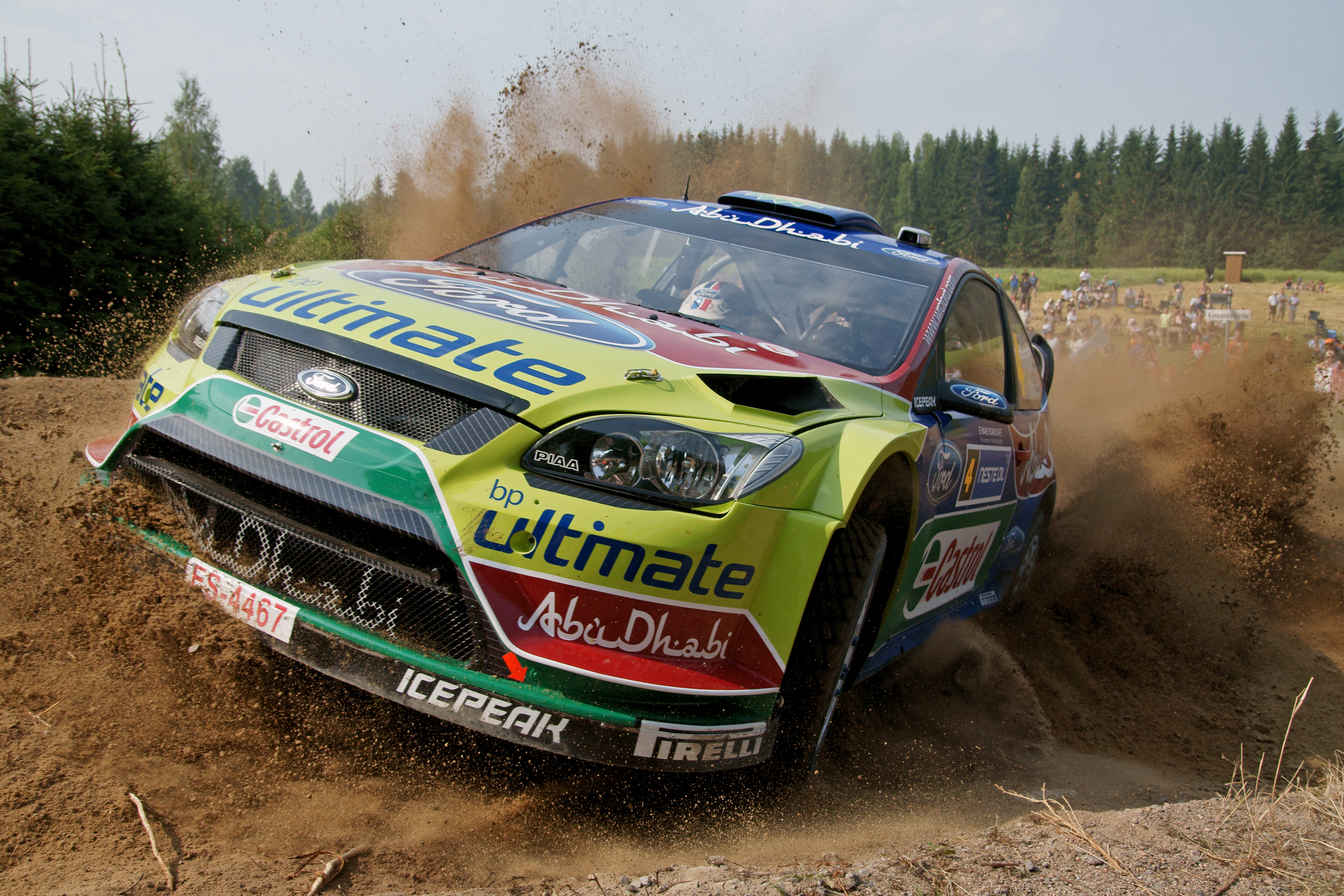|
Burn In
Burn-in is the process by which components of a system are exercised before being placed in service (and often, before the system being completely assembled from those components). This testing process will force certain failures to occur under supervised conditions so an understanding of load capacity of the product can be established. The intention is to detect those particular components that would fail as a result of the initial, high-failure rate portion of the bathtub curve of component reliability. If the burn-in period is made sufficiently long (and, perhaps, artificially stressful), the system can then be trusted to be mostly free of further early failures once the burn-in process is complete. Theoretically, any weak components would fail during the "Burn In" time allowing those parts to be replaced. Replacing the weak components would prevent premature failure, infant mortality failure, or other latent defects. When the equivalent lifetime of the stress is extended i ... [...More Info...] [...Related Items...] OR: [Wikipedia] [Google] [Baidu] |
Bathtub Curve
The bathtub curve is a particular shape of a failure rate graph. This graph is used in reliability engineering and deterioration modeling. The 'bathtub' refers to the shape of a line that curves up at both ends, similar in shape to a bathtub. The bathtub curve has 3 regions: #The first region has a decreasing failure rate due to early failures. #The middle region is a constant failure rate due to random failures. #The last region is an increasing failure rate due to wear-out failures. Not all products exhibit a bathtub curve failure rate. A product is said to follow the bathtub curve if in the early life of a product, the failure rate decreases as defective products are identified and discarded, and early sources of potential failure such as manufacturing defects or damage during transit are detected. In the mid-life of a product the failure rate is constant. In the later life of the product, the failure rate increases due to wearout. Many electronic consumer product life cycl ... [...More Info...] [...Related Items...] OR: [Wikipedia] [Google] [Baidu] |
Wired (website)
''Wired'' is a bi-monthly American magazine that focuses on how emerging technologies affect culture, the economy, and politics. It is published in both print and Online magazine, online editions by Condé Nast. The magazine has been in publication since its launch in January 1993. Its editorial office is based in San Francisco, California, with its business headquarters located in New York City. ''Wired'' quickly became recognized as the voice of the emerging digital economy and culture and a pace setter in print design and web design. From 1998 until 2006, the magazine and its website, ''Wired.com'', experienced separate ownership before being fully consolidated under Condé Nast in 2006. It has won multiple National Magazine Awards and has been credited with shaping discourse around the digital revolution. The magazine also coined the term Crowdsourcing, ''crowdsourcing'', as well as its annual tradition of handing out Vaporware Awards. ''Wired'' has launched several in ... [...More Info...] [...Related Items...] OR: [Wikipedia] [Google] [Baidu] |
Shakedown (testing)
A shakedown is a period of testing or a trial journey undergone by a ship, aircraft or other craft and its crew before being declared operational. Statistically, a proportion of the components will fail after a relatively short period of use, and those that survive this period can be expected to last for a much longer, and more importantly, predictable life-span. For example, if a bolt has a hidden flaw introduced during manufacturing, it will not be as reliable as other bolts of the same type. Example procedures Racing cars Most racing cars require a "shakedown" test before being used at a race meeting. For example, on May 3, 2006, Luca Badoer performed shakedowns on all three of Ferrari's Formula One cars at the Fiorano Circuit, in preparation for the European Grand Prix at the Nürburgring. Badoer was the Ferrari F1 team's test driver at the time, while the main drivers were Michael Schumacher and Felipe Massa. Aircraft Aircraft shakedowns check avionics, flight cont ... [...More Info...] [...Related Items...] OR: [Wikipedia] [Google] [Baidu] |
Dielectric Withstand Test
In electrical engineering, a dielectric withstand test (also pressure test, high potential test, hipot test, or insulation test) is an electrical safety test performed on a component or product to determine the effectiveness of its insulation. The test may be between mutually insulated sections of a part, or energized parts and ground. The test is a means to qualify a device's ability to operate safely during rated electrical conditions. If the current through a device under test is less than a specified limit at the required test potential and time duration, the device meets the dielectric withstand requirement. A dielectric withstand test may be done as a factory test on new equipment, or may be done on apparatus already in service as a routine maintenance test.Paul Gill (2009), ''Electrical Power Equipment Maintenance and Testing'', Second Edition, CRC Press, 1574446568, page 459 Voltage withstand testing is done with a high-voltage source and voltage and current meters. A ... [...More Info...] [...Related Items...] OR: [Wikipedia] [Google] [Baidu] |
Survival Analysis
Survival analysis is a branch of statistics for analyzing the expected duration of time until one event occurs, such as death in biological organisms and failure in mechanical systems. This topic is called reliability theory, reliability analysis or reliability engineering in engineering, duration analysis or duration modelling in economics, and event history analysis in sociology. Survival analysis attempts to answer certain questions, such as what is the proportion of a population which will survive past a certain time? Of those that survive, at what rate will they die or fail? Can multiple causes of death or failure be taken into account? How do particular circumstances or characteristics increase or decrease the probability of survival? To answer such questions, it is necessary to define "lifetime". In the case of biological survival, death is unambiguous, but for mechanical reliability, failure may not be well-defined, for there may well be mechanical systems in which failure ... [...More Info...] [...Related Items...] OR: [Wikipedia] [Google] [Baidu] |
Reliability Theory
Reliability engineering is a sub-discipline of systems engineering that emphasizes the ability of equipment to function without failure. Reliability is defined as the probability that a product, system, or service will perform its intended function adequately for a specified period of time, OR will operate in a defined environment without failure. Reliability is closely related to availability, which is typically described as the ability of a component or system to function at a specified moment or interval of time. The ''reliability function'' is theoretically defined as the probability of success. In practice, it is calculated using different techniques, and its value ranges between 0 and 1, where 0 indicates no probability of success while 1 indicates definite success. This probability is estimated from detailed (physics of failure) analysis, previous data sets, or through reliability testing and reliability modeling. Availability, testability, maintainability, and maint ... [...More Info...] [...Related Items...] OR: [Wikipedia] [Google] [Baidu] |
Failure Rate
Failure is the social concept of not meeting a desirable or intended objective, and is usually viewed as the opposite of success. The criteria for failure depends on context, and may be relative to a particular observer or belief system. One person might consider a failure what another person considers a success, particularly in cases of direct competition or a zero-sum game. Similarly, the degree of success or failure in a situation may be differently viewed by distinct observers or participants, such that a situation that one considers to be a failure, another might consider to be a success, a qualified success or a neutral situation. It may also be difficult or impossible to ascertain whether a situation meets criteria for failure or success due to ambiguous or ill-defined definition of those criteria. Finding useful and effective criteria or heuristics to judge the success or failure of a situation may itself be a significant task. Sociology Cultural historian Sco ... [...More Info...] [...Related Items...] OR: [Wikipedia] [Google] [Baidu] |
Burn-in Oven
Burn-in ovens in electronics device fabrication, are designed for dynamic and static burn-in of integrated circuits and other electronic devices, including laser diodes. Typical sizes are from under ten to over , with air or nitrogen configurations. Operating temperatures can go over , and can use both single and multiple temperature settings. Burn-in oven applications can be used in numerous different applications such as high-dissipation forward bias, high-temperature reverse bias, dynamic and static burn-in of microprocessors and other semiconductor A semiconductor is a material with electrical conductivity between that of a conductor and an insulator. Its conductivity can be modified by adding impurities (" doping") to its crystal structure. When two regions with different doping level ... devices. Burn-in ovens are considered a type of batch oven. Other types of batch ovens are bench/laboratory, reach-in, walk in/truck in, and clean process. One company builds sy ... [...More Info...] [...Related Items...] OR: [Wikipedia] [Google] [Baidu] |
Audiophile
An audiophile (from + ) is a person who is enthusiastic about high-fidelity sound reproduction. The audiophile seeks to achieve high sound quality in the audio reproduction of recorded music, typically in a quiet listening space in a room with good acoustics. Audiophile values may be applied at all stages of music reproduction—the initial audio recording, the production process, the storage of sound data, and the playback (usually in a home setting). In general, the values of an audiophile are seen to be antithetical to the growing popularity of more convenient but lower-quality music, especially lossy digital file types like MP3, lower-definition music streaming services, laptop or cell phone speakers, and low-cost headphones. The term '' high-end audio'' refers to playback equipment used by audiophiles, which may be bought at specialist shops and websites. High-end components include turntables, digital-to-analog converters, equalization devices, preamplifiers and ... [...More Info...] [...Related Items...] OR: [Wikipedia] [Google] [Baidu] |
Voltage
Voltage, also known as (electrical) potential difference, electric pressure, or electric tension, is the difference in electric potential between two points. In a Electrostatics, static electric field, it corresponds to the Work (electrical), work needed per unit of Electric charge, charge to move a positive Test particle#Electrostatics, test charge from the first point to the second point. In the SI unit, International System of Units (SI), the SI derived unit, derived unit for voltage is the ''volt'' (''V''). The voltage between points can be caused by the build-up of electric charge (e.g., a capacitor), and from an electromotive force (e.g., electromagnetic induction in a Electric generator, generator). On a macroscopic scale, a potential difference can be caused by electrochemical processes (e.g., cells and batteries), the pressure-induced piezoelectric effect, and the thermoelectric effect. Since it is the difference in electric potential, it is a physical Scalar (physics ... [...More Info...] [...Related Items...] OR: [Wikipedia] [Google] [Baidu] |
Temperature
Temperature is a physical quantity that quantitatively expresses the attribute of hotness or coldness. Temperature is measurement, measured with a thermometer. It reflects the average kinetic energy of the vibrating and colliding atoms making up a substance. Thermometers are calibrated in various temperature scales that historically have relied on various reference points and thermometric substances for definition. The most common scales are the Celsius scale with the unit symbol °C (formerly called ''centigrade''), the Fahrenheit scale (°F), and the Kelvin scale (K), with the third being used predominantly for scientific purposes. The kelvin is one of the seven base units in the International System of Units (SI). Absolute zero, i.e., zero kelvin or −273.15 °C, is the lowest point in the thermodynamic temperature scale. Experimentally, it can be approached very closely but not actually reached, as recognized in the third law of thermodynamics. It would be impossible ... [...More Info...] [...Related Items...] OR: [Wikipedia] [Google] [Baidu] |




